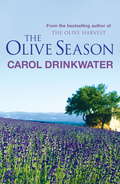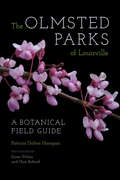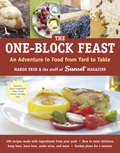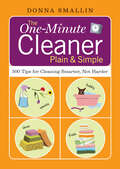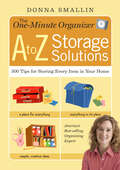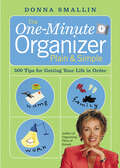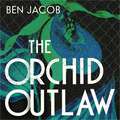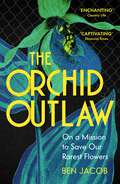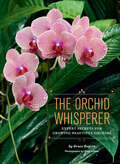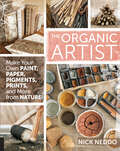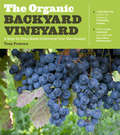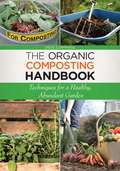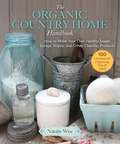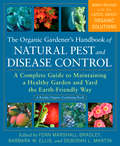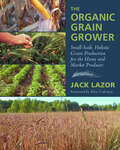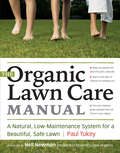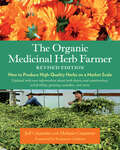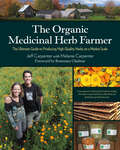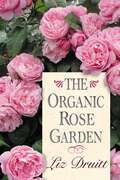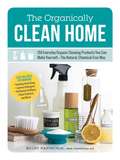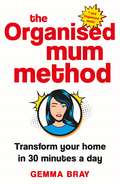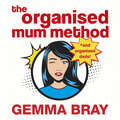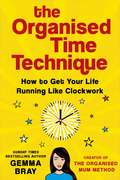- Table View
- List View
The Olive Season: By The Author of the Bestselling The Olive Farm
by Carol DrinkwaterSecond in the bestselling Olive Farm story from the bestselling author of THE FORGOTTEN SUMMER'She writes so well you can almost smell the sun-baked countryside' BELLA'Vibrant, intoxicating and heart-warming' SUNDAY EXPRESS'I scan the terraces, planted with row upon row of ancient olive trees. It is April, late spring. Here in the hills behind the Cote d'Azur the olive groves are delicately blossomed, with their tiny, white-forked flowers. Beyond them, perched halfway up the slope of the hill, our belle epoque villa comes into view. Abounding in balustrade terraces, nestling among cedars and palms, facing out at a south-westerly angle, overlooking the bay of Cannes towards the sun-kissed Mediterranean, there it is, Appassionata, awaiting us...'THE OLIVE FARM told how Carol Drinkwater and partner Michel fell in love with and bought an abandoned Provencal olive farm. Now, in THE OLIVE SEASON, Carol is pregnant and their ever-loyal gardener is leaving to oversee the marriage of his son. Often unassisted, and with new challenges to face, Carol takes on the bulk of the farm work alone. Water is, as ever, a costly problem, and she goes in search of a diviner who promises almost magical results. But, as the harvest season approaches, dramatic events cast dark shadows of their olive farm.
The Olmsted Parks of Louisville: A Botanical Field Guide
by Patricia Dalton Haragan“A quality tribute to America’s greatest landscape architect, these parks he created, and especially the plants that thrive there.” —Plant Science BulletinFrederick Law Olmsted, popularly known as the “Father of American Landscape Architecture,” is famous for designing New York City’s Central Park, the US Capitol grounds, and the campuses of institutions such as Stanford University and the University of Chicago. His celebrated projects in Boston, Buffalo, Detroit, Milwaukee, and other cities led to a commission from the city of Louisville, Kentucky, in 1891. There, he partnered with community leaders to design a network of scenic parks, tree-lined parkways, elegant neighborhoods, and beautifully landscaped estate gardens that thousands of visitors still enjoy today.The Olmsted Parks of Louisville is the first authoritative manual on the 380 species of trees, herbaceous plants, shrubs, and vines populating the nearly 1,900 acres that comprise Cherokee, Seneca, Iroquois, Shawnee, and Chickasaw Parks. Designed for easy reference, this handy field guide includes detailed photos and maps as well as ecological and historical information about each park. Patricia Dalton Haragan also includes sections detailing the many species of invasive plants in the parks and discusses the native flora that they displaced.This guide provides a key to Olmsted’s vision, revealing how various plant species were arranged to emphasize the beauty and grandeur of nature. It’s an essential resource for students, nature enthusiasts, and visitors from near and far.
The One-Block Feast
by Margo TrueBased on the James Beard Award-winning blog The One-Block Diet, this all-in-one home gardening, do-it-yourself guide and cookbook shows you how to transform a backyard or garden into a self-sufficient locavore's paradise. When Margo True and her fellow staffers at Northern California-based Sunset magazine walked around the grounds of their Menlo Park office, they saw more than just a lawn and some gardens. Instead, they saw a fresh, bountiful food source, the makings for intrepid edible projects, and a series of seasonal feasts--all just waiting to happen. The One-Block Feast is the story of how True and her team took an inspired idea and transformed it into an ambitious commitment: to create four feasts over the course of a year, using only what could be grown or raised in their backyard-sized plot. She candidly shares the group's many successes and often humorous setbacks as they try their hands at chicken farming, cheese making, olive pressing, home brewing, bee keeping, winemaking, and more. Grouped into gardening, project, and recipe guides for each season, The One-Block Feast is a complete resource for planning an eco-friendly kitchen garden; making your own pantry staples for year-round cooking and gifts; raising bees, chickens, and even a cow; and creating made-from-scratch meals from ingredients you've grown yourself. Chapters are organized by season, each featuring a planting plan and crop-by-crop instructions, an account of how that season's projects played out for the Sunset team, and a multicourse dinner menu composed of imaginative, appealing, and ultra-resourceful vegetarian recipes, such as: Butternut Squash Gnocchi with Chard and Sage Brown Butter * Egg and Gouda Crepes * Whole Wheat Pizzas with Roasted Vegetables and Homemade Cheeses * Fresh Corn Soup with Zucchini Blossoms * Braised Winter Greens with Preserved Lemons and Red Chile * Summer Lemongrass Custards * Honey Ice Cream Generously illustrated and easy to follow, this ultimate resource for today's urban homesteader will inspire you to take "eating local" to a whole new level.
The One-Minute Cleaner Plain & Simple: 500 Tips for Cleaning Smarter, Not Harder
by Donna SmallinClean smarter, not harder. Donna Smallin shows you how to quickly and effectively clear clutter, destroy dirt, and restore order. With 500 plain and simple strategies for efficiently eliminating the mess in every room, you’ll discover how easy it can be to maintain a clean home without devoting hours on end to housework. Learn how to use a spare minute here and there to shorten chores and free up more time to do the things you love.
The One-Minute Organizer A to Z Storage Solutions: 500 Tips for Storing Every Item in Your Home
by Donna SmallinIf you’re like most people, you have too much stuff and too little storage space. In this easy-to-use guide, Donna Smallin shows you how to create an efficient and clutter-free life using a common-sense approach to item-by-item storage. With 500 quick and effective strategies to creatively solve all of your vexing storage issues, Smallin offers proven techniques that will not only help you find a place for everything, but easily find everything you’re looking for.
The One-Minute Organizer Plain & Simple: 500 Tips for Getting Your Life in Order
by Donna SmallinBring order to your hectic life, quickly and efficiently. Donna Smallin offers innovative ideas and effective solutions to the busy person’s daily battle with both physical and mental clutter. This easy-to-follow guide includes 500 strategies that will help you make your world a more orderly place so that you can spend more time enjoying the things that really matter. Even if you don’t have time for a top-to-bottom organizational makeover, you can still unclutter your life . . . one short minute at a time.
The Orchid Outlaw: On a Mission to Save Britain's Rarest Flowers
by Ben JacobThe fascinating story of one man's mission to track down and rescue rare orchids from destruction on the building sites of Britain.Ben Jacob is an orchid thief. He spends his life (and risks prison) tracking down rare orchids and rescuing them from unwitting destruction on the building sites and greenbelt developments of Britain. This is his story.Ben fell in love with orchids as a nine-year-old, when his parents bought him a Cymbidium. That love then led him to spend his twenties in various tropical cities, teaching English and exploring jungles where exotic orchid species grew wild, pollinated by hummingbirds, huge moths and more. After a decade abroad, Ben returned to the UK. Here, his passion re-ignited when he encountered a colony of Bee orchids, a cryptic species which tricks bees into mating with its flowers. Ben was entranced. Having long seen Britain's orchids as pale imitations of their tropical cousins, he changed his mind completely and set out to find and photograph all fifty-one British species.Reading and learning everything he could, Ben realised that Britain's orchids are in desperate trouble. Some, such as Summer's Lady Tresses, have gone extinct; others, such as the magnificently strange Ghost Orchid, have not been seen since 2009; all have experienced vertiginous declines. Changes in land use and climate are responsible, but so too are Britain's outdated environmental and planning laws, which seem incapable of protecting rare species in the face of the drive to build new homes and infrastructure.That's how Ben turned outlaw. He began saving orchids slated for destruction, digging them out in the middle of the night and replanting them in safe places, all this while knowing that the work he was doing was illegal, for if arrested Ben could have been fined £5,000 for each wild orchid plant he saved, and he might even have faced prison.Part memoir, part fascinating history of our most exotic and yet overlooked flower, this is nature writing with a real story. Ben shares with us his mission, and raises urgent questions about our environmental legislation.The world needs more Bens.(P) 2023 Hodder & Stoughton Limited
The Orchid Outlaw: On a Mission to Save Britain's Rarest Flowers
by Ben JacobTEN YEARS AGO, BEN JACOB TURNED OUTLAW TO SAVE OUR RAREST FLOWERS. THIS IS HIS STORY.Obsessed by orchids since childhood, Ben spent years travelling to far-flung jungles to see them in the wild. Then a chance encounter set him off on a journey of discovery into the wonderful, but often forgotten, world of Britain's fifty-one native species. These include the Bee which looks (and smells) so much like one that even bees are fooled, the Ghost which exists without sunlight, and Autumn Lady's Tresses which gave Darwin the proof he needed for his theory of evolution.But our orchids are in desperate trouble. Many species are facing extinction. Decimated by changes in land use and climate, inadequately protected by environmental and planning laws, their habitats are disappearing fast. Determined to act before it was too late, Ben broke into building sites in the dead of night to rescue threatened plants, and turned his kitchen into a laboratory, his fridge into storage for hundreds of baby orchids, and his back yard into a plantation. But doing all that put him on the wrong side of the law. . . At once a memoir, a natural history, and an inspiring call to action, reintroducing us to Britain's most endangered flowers, The Orchid Outlaw shows us how we can all save the world, one plant at a time.
The Orchid Whisperer: Expert Secrets for Growing Beautiful Orchids
by Bruce RogersAn extensive, easy-to-read guide to growing healthy orchids again and again, perfect for beginners, as well as experts looking for new tricks. Orchids are more popular than ever but can be intimidating in their exotic beauty. In this start-to-finish guide, acclaimed orchid expert Bruce Rogers demystifies the growing process so you can watch your plants thrive and bloom year after year. The Orchid Whisperer outlines: · How to buy orchids: What to look for, how to get the most for your money, and what questions to ask for · Essentials for orchid care: Watering, fertilizing, repotting, and common myths · Popular easy-to-grow orchid types and what to know about them · Creative decorating ideas: Choosing containers, displaying orchids, and how to create centerpieces and garlands · And much more Packed with expert advice and helpful tips and featuring more than one hundred beautiful color photographs of breathtaking plants, The Orchid Whisperer is a must-have for orchid lovers of every stripe. Praise for The Orchid Whisperer &“In layman&’s language, Rogers shares his recommendations for plant selection, repotting, watering, and fertilizing most of the tropicals you will find at local markets. Sections such as &“Orchid True and False&” and &“Location, Location, Location&” share practical advice with a splash of humor.&” —Marin Independent Journal&“An eminently intelligent and attractive book for beginning orchid growers. Rogers&’ language is engaging and humorous, and strikes the right balance between being easy to read and needing a science degree to understand. . . . The Orchid Whisperer is one to put on the holiday list for novice orchidists.&” —Orchids
The Organic Artist: Make Your Own Paint, Paper, Pigments, Prints, and More from Nature
by Nick NeddoDrawing on ancient techniques, a primitive-arts instructor shows how to reconnect with nature by making and using your own all-natural art supplies.The Organic Artist encourages you to return to those days when art was made with all-natural materials, like charcoal and birch bark. Immersing you in the natural world, this book seeks to inspire creativity by connecting you to your organic roots.In addition to offering a wide variety of suggestions for using nature as supplies for art, this book also introduces the concepts of awareness and perception that are foundational to the creative process. You can refine your drawing skills, as well as increase their appreciation for the visual arts and the natural landscape. Projects and skills covered include:Making paper and wild inkWorking with soapstone, clay, wood, and rawhidePrintmaking and stencilingNatural pigments and dyesCamouflage and body paintingNature journaling, and more“Clear, concise and easy to follow . . . a pleasure to both use as a how-to book and read through.” —Michael Pewtherer, author of Wilderness Survival Handbook
The Organic Backyard Vineyard: A Step-by-Step Guide to Growing Your Own Grapes
by Tom PowersInterest in wine shows no signs of slowing down—wine tours, tastings, and vacations are now common and homeowners often have space dedicated to their collection. The logical next step? Learning to grow and make your own.In The Organic Backyard Vineyard expert Tom Powers walks the small grower through the entire process of growing grapes, with a month-by-month maintenance guide covering all regions of the U.S. and Canada. He explains everything a beginning grape grower needs to know: how to design and build a vineyard, how to select grapes for each region, how to maximize yield using organic maintenance techniques, how to build a trellis, how to harvest at peak flavor, and how to store grapes for winemaking.This edition includes organic growing information and all new photography.
The Organic Composting Handbook: Techniques for a Healthy, Abundant Garden
by Dede CummingsGreat compost is one of the most important secrets of successful organic gardening. In this comprehensive guide, you'll learn everything you need to know about the various methods of composting and how to adapt them to your home and garden. With full-color photographs and easy-to-follow instructions, this will be a welcome addition to every organic gardener's library. Topics covered include: What you can and can't throw on your compost pile * How to balance nitrogen and carbon in your pile for quick decomposition and rich compost * Buying or building the best tools and containers * Vermicomposting * How to compost indoors * Troubleshooting smelly compost, dry compost, and other problems * How and when to apply the compost to your garden beds. With growing concerns about the use of pesticides, herbicides, and GMOs in mainstream gardening practices, more and more families are turning to their backyards to grow their own food using methods they know are safe. The need for clear, straightforward instruction on organic gardening techniques has never been greater. With The Organic Composting Handbook, readers will get the information they need to prepare their gardens for healthy, abundant crops.
The Organic Country Home Handbook: How to Make Your Own Healthy Soaps, Sprays, Wipes, and Other Cleaning Products
by Natalie WiseA Beautiful and Modern Handbook for Keeping Home the Natural WayHome is a haven, a place of refuge. But did you know it might be making you sick? If your home is cluttered, overwhelming, and full of chemicals, it’s time to detox. The Organic Country Home helps you declutter and clean with natural, homemade products that are healthy for you and your family. You’ll find information on why you should start going organic now and the best organic cleaning products and supplies, where to find them, and how to make them. Start with the basics and work your way into every corner of your home . . . from tile grout to shower mold, how to clean lampshades to how to clean water bottles. There are recipes for cleaning nearly every surface in your home from the carpet to stuffed animals. If you have questions about keeping an organic home, The Organic Country Home has answers. You’ll also learn storage and organization secrets to keep your home clutter-free, how to manage your time and budget, and why some old-fashioned remedies are still the modern organic ways to keep home. Not only will you find your home cleaner and fresher than ever, it will be inviting, welcoming, and an altogether modern organic home. Now is the time to get started.
The Organic Gardener's Handbook of Natural Pest and Disease Control: A Complete Guide to Maintaining a Healthy Garden and Yard the Earth-Friendly Way (Rodale Organic Gardening)
by Barbara W. Ellis Fern Marshall Bradley Deborah L. MartinWith growing consumer awareness about the dangers of garden chemicals, turn to The Organic Gardener's Handbook of Natural Pest and Disease Control as the most reliable and comprehensive guide on the garden shelf. Rodale has been the category leader in organic methods for decades, and this thoroughly updated edition features the latest science-based recommendations for battling garden problems. With all-new photos of common and recently introduced pests and plant diseases, you can quickly identify whether you've discovered garden friend or foe and what action, if any, you should take.No other reference includes a wider range of methods for growing and maintaining an organic garden. The plant-by-plant guide features symptoms and solutions for 200 popular plants, including flowers, vegetables, trees, shrubs, and fruits. The insect-and-disease encyclopedia includes a photo identification guide and detailed descriptions of damage readers may see. The extensive coverage of the most up-to-date organic control techniques and products, presented in order of lowest impact to most intensive intervention, makes it easy to choose the best control.
The Organic Grain Grower: Small-Scale, Holistic Grain Production for the Home and Market Producer
by Jack Lazor&“The Organic Grain Grower is the best resource we&’ve seen for small-scale grain growers everywhere. . . . [Lazor&’s] passion comes alive in this fine guidebook&’s depth of detail.&”—Mother Earth NewsThe ultimate guide to growing organic grains on a small and ecological scale The Organic Grain Grower is invaluable for both home-scale and commercial producers interested in expanding their resiliency and crop diversity through growing their own grains. Longtime farmer and organic pioneer Jack Lazor covers how to grow and store wheat, barley, oats, corn, dry beans, soybeans, pulse crops, oilseeds, grasses, nutrient-dense forages, and lesser-known cereals. In addition to detailed cultivation and processing information, Lazor argues the importance of integrating grains on the organic farm (not to mention for the local-food system) for reasons of biodiversity and whole farm management. Including extensive information on:The history of grain growing and consumption in North AmericaThe twenty-first century and the birth of the local-food movementConsidering your farm&’s scale and climateUnderstanding soil fertility and structurePlanting your crop (including spring vs. fall cereals and preparing your soil)The growing and ripening process (reproductive, milk, hard-and-soft dough stages)The grain harvestPreparing grain for sale, storage, or end use (drying, cleaning seed, grain handling)Seed breeding and savingMachinery, infrastructure, and processing (both home-scale tools and larger farm equipment)Grinding grains for livestock rations (including how to put together a ration based on protein content) and sample rations for dairy cows, pigs, and chickensProcessing grains for human consumptionAdditional resources and information for new grain farmers, and more…Beginners will learn how to grow enough wheat for a year&’s supply of bread flour for their homestead, and farmers will learn how to become part of a grain co-op, working alongside artisan bakers and mills. Never before has there been a guide to growing organic grains applicable both for the home-scale and professional farming scale.This will be a classic for decades to come and a crucial addition to any farmer&’s, homesteader&’s, gardener&’s, agronomist&’s, or seed-saver&’s library.
The Organic Lawn Care Manual: A Natural, Low-Maintenance System for a Beautiful, Safe Lawn
by Paul TukeyCreate a gorgeous lawn that is free of harsh chemicals. This comprehensive guide covers everything you need to know to grow and maintain a thriving lawn using organic gardening methods. With expert advice on planting the best grass varieties, nourishing the soil, watering, fighting weeds, and sustainable maintenance, Paul Tukey helps you create a luscious and inviting lawn that is pesticide-free and safe for your children and pets.
The Organic Medicinal Herb Farmer, Revised Edition: How to Produce High-Quality Herbs on a Market Scale
by Jeff Carpenter&“Seasoned and novice growers alike will find a mother lode of information and wisdom packed into this gem of a book!&”—Nancy Phillips, author of The Herbalist&’s Way*Updated with new information about herb dryers and construction, soil fertility, growing cannabis, and moreIn the first edition of The Organic Medicinal Herb Farmer, authors Jeff and Melanie Carpenter presented a comprehensive seed-to-bottle guide for aspiring and experienced growers alike, from basic business considerations to planting and propagation to creating value-added products. Now they&’re back with a revised and updated edition, sharing the lessons they&’ve learned throughout their twenty-five years of operating a medicinal herb farm that prizes quality over quantity.The Carpenters offer their insights and tips on every aspect of herb farming, including:Size and scale considerationsData management for profit maximizationThe herbal marketplace and choosing which herbs to growField and bed preparation and planting, including building soil fertilityPlant-positive weed, pest, and disease controlHarvest and post-harvest processing, including scalable dryer constructionValue-added products and marketingA new chapter on growing cannabisAnd much more!The Carpenters make the case that growing organic medicinal herbs is not only viable and profitable, but also an important step for improving the ecological health of farmland, taking pressure off of wild medicinal plant populations, and increasing biodiversity. While local foodways are more often the focus of attention, local medicine ways are equally critical and in need of restoration.The Organic Medicinal Herb Farmer is a one-of-a-kind resource, complete with detailed profiles of 50 medicinal herbs and over 200 color photographs. Whether you&’re looking to grow an herb farm from the ground up, incorporate medicinal plants on an existing farm, or add tools to your belt as a seasoned grower, you&’ll find the information you need in this volume.&“[A] beautiful and informative book . . . A dirt-smudged copy should be within easy reach of every home gardener or farmer who grows—or wants to grow—medicinal plants.&”—Michael McGuffin, President, American Herbal Products Association
The Organic Medicinal Herb Farmer: The Ultimate Guide to Producing High-Quality Herbs on a Market Scale
by Jeff Carpenter Melanie CarpenterA new approach to growing local medicine, including information on geo-authenticity, wildcrafting, and developing a good business plan"[A] beautiful and informative book . . . A dirt-smudged copy should be within easy reach of every home gardener or farmer who grows—or wants to grow—medicinal plants."—Michael McGuffin, President, American Herbal Products AssociationBoth a business guide and a farming manual, The Organic Medicinal Herb Farmer will teach readers how to successfully grow and market organic medicinal Western herbs.Whether you&’re trying to farm medicinal plants, culinary herbs, or at-risk native herbs exclusively or simply add herbal crops to what you&’re already growing, successful small-scale herb farmers Jeff and Melanie Carpenter will guide you through the entire process―from cultivation to creating value-added products.Using their Zack Woods Herb Farm in Vermont as a backdrop, the Carpenters cover all the basic practical information farmers need to know to get an organic herb farm up and running, including:• Size and scale considerations• Layout and design of the farm and facilities• Growing and cultivation information, including types of tools• Field and bed prep• Plant propagation• Weed control, and pests and diseases• Harvesting, as well as wild harvesting and the concept of geo-authentic botanicals• Post-harvest processing• Value-added products and marketingThe authors also provide fifty detailed plant profiles, going deeper into the herbs every farmer should consider growing, including:• Arnica• Calendula• Echinacea• Ginko• Ginseng• Peppermint• Saint John&’s Wort• ValerianIn an easy-to-understand, practical, and comprehensive manner, readers will learn how to focus on quality over quantity, and keep costs down by innovating with existing equipment, rather than expensive technology. Market farmers who have never before considered growing medicinal herbs will learn why it&’s more important to produce these herbs domestically.The Organic Medicinal Herb Farmer makes a convincing case that producing organic medicinal herbs can be a viable, profitable, farming enterprise. The Carpenters also make the case for incorporating medicinal herbs into existing operations, as it can help increase revenue in the form of value-added products, not to mention improve the ecological health of farmland by encouraging biodiversity as a path toward greater soil health.
The Organic Rose Garden
by Liz DruittOffers the elements of garden design necessary for an organic program, as well as companion plant ideas, cultivation and troubleshooting, fun extras such as rose recipes, and a timely organic perspective.
The Organically Clean Home: 150 Everyday Organic Cleaning Products You Can Make Yourself--The Natural, Chemical-Free Way
by Becky RapinchukAs seen in Real Simple, Shape Magazine, and on Oprah.com Cleaning products that save money--and the planet!Forget about chemical cleaners and pricey "green" products--all you need are a few simple kitchen staples to make your whole house sparkle! The Organically Clean Home features 150 easy-to-make recipes for cleaning products filled with all-natural ingredients you can trust (and actually pronounce!). From dishwasher detergent to antibacterial wipes, America's favorite cleaning blogger Becky Rapinchuk guides you through the steps needed to make these everyday necessities--without spending a fortune.Complete with simple instructions for packaging and storing your homemade cleaners, you'll enjoy turning each room into a beautiful and toxic-free space with fresh-scented products like:Lemon and clove hardwood floor cleanerNo-bleach laundry whitener and brightenerPeppermint glass and mirror wipesLavender and lemon bathroom disinfecting sprayCitrus foaming hand soapWith The Organically Clean Home, you'll save hundreds of dollars every month--and have a clean, healthy home that you and your family can feel good about.
The Organised Mum Method: Transform your home in 30 minutes a day
by Gemma BrayTHE SUNDAY TIMES BESTSELLERThe Organised Mum Method is THE housekeeping bible that will completely revolutionise your home.Say goodbye to mess, clutter and weekends spent tidying and cleaning! Gemma Bray (a.k.a The Organised Mum) is a firm believer that there is more to life than housework, and over the last decade she has perfected The Organised Mum Method (TOMM).* The Organised Mum Method is a structured, manageable and ultra-efficient cleaning routine that ensures all areas of the home are taken care of. It's easy to follow, effective and ensures that everything gets done in just 30 minutes a day, Monday to Friday ... and you get weekends off!Perfect for existing fans of TOMM or anyone looking for ways to fit cleaning around a busy lifestyle, The Organised Mum Method includes life-changing tips, tricks, cleaning schedules, shopping lists, meal plans and quick recipes that will help you get your housework done fast.*Don't worry dads -- it works for you too.
The Organised Mum Method: Transform your home in 30 minutes a day
by Gemma BrayThe Organised Mum Method is THE housekeeping bible that will completely revolutionise your home.Say goodbye to mess, clutter and weekends spent tidying and cleaning! Gemma Bray (a.k.a The Organised Mum) is a firm believer that there is more to life than housework, and over the last decade she has perfected The Organised Mum Method (TOMM).* The Organised Mum Method is a structured, manageable and ultra-efficient cleaning routine that ensures all areas of the home are taken care of. It's easy to follow, effective and ensures that everything gets done in just 30 minutes a day, Monday to Friday ... and you get weekends off!Perfect for existing fans of TOMM or anyone looking for ways to fit cleaning around a busy lifestyle, The Organised Mum Method includes life-changing tips, tricks, cleaning schedules, shopping lists, meal plans and quick recipes that will help you get your housework done fast.*Don't worry dads -- it works for you too.
The Organised Mum Method: Transform your home in 30 minutes a day
by Gemma BrayTHE SUNDAY TIMES BESTSELLERThe Organised Mum Method is THE housekeeping bible that will completely revolutionise your home.Say goodbye to mess, clutter and weekends spent tidying and cleaning! Gemma Bray (a.k.a The Organised Mum) is a firm believer that there is more to life than housework, and over the last decade she has perfected The Organised Mum Method (TOMM).* The Organised Mum Method is a structured, manageable and ultra-efficient cleaning routine that ensures all areas of the home are taken care of. It's easy to follow, effective and ensures that everything gets done in just 30 minutes a day, Monday to Friday ... and you get weekends off!Perfect for existing fans of TOMM or anyone looking for ways to fit cleaning around a busy lifestyle, The Organised Mum Method includes life-changing tips, tricks, cleaning schedules, shopping lists, meal plans and quick recipes that will help you get your housework done fast.*Don't worry dads -- it works for you too.
The Organised Time Technique: How to Get Your Life Running Like Clockwork
by Gemma BrayThe new life-changing technique from Gemma Bray - creator of The Organised Mum Method'Ingenious' Daily MailDo you ever get to the end of the day and feel like you've achieved nothing? Do you find it difficult to decide how to spend the small amount of free time you have? Do you ever wonder how some people seem to be able to fit everything in? If you're feeling overwhelmed by all the things you need to squeeze into your day, unproductive or stuck in a daily routine that isn't making you happy, The Organised Time Technique is for you. This is Gemma Bray's unique method for organising your day that will stop you from trying to do everything (and feeling like a failure when you can't), keep you focused on how you use the time you have available, help you play to your strengths and, most importantly, help you find time for the things that really matter. The Organised Time Technique provides the tools - and the headspace - you need to create a framework for your life that means you will always know where you are supposed to be, what you are supposed to be doing and when you are supposed to be doing it. By following the plan, you will not only get everything done, but also create space for the things that you really want to do, whether that's taking up a new hobby, reading a book, starting a side business or simply having a long, relaxing bath!Just as The Organised Mum Method helped you to feel on top of the housework, The Organised Time Technique will revolutionise the way you spend your day. In no time at all, you will go from feeling flustered to feeling fabulous.Are you ready?
The Organised Time Technique: How to Get Your Life Running Like Clockwork
by Gemma BrayThe new life-changing technique from Gemma Bray - creator of The Organised Mum Method'Ingenious' Daily MailDo you ever get to the end of the day and feel like you've achieved nothing? Do you find it difficult to decide how to spend the small amount of free time you have? Do you ever wonder how some people seem to be able to fit everything in? If you're feeling overwhelmed by all the things you need to squeeze into your day, unproductive or stuck in a daily routine that isn't making you happy, The Organised Time Technique is for you. This is Gemma Bray's unique method for organising your day that will stop you from trying to do everything (and feeling like a failure when you can't), keep you focused on how you use the time you have available, help you play to your strengths and, most importantly, help you find time for the things that really matter. The Organised Time Technique provides the tools - and the headspace - you need to create a framework for your life that means you will always know where you are supposed to be, what you are supposed to be doing and when you are supposed to be doing it. By following the plan, you will not only get everything done, but also create space for the things that you really want to do, whether that's taking up a new hobby, reading a book, starting a side business or simply having a long, relaxing bath!Just as The Organised Mum Method helped you to feel on top of the housework, The Organised Time Technique will revolutionise the way you spend your day. In no time at all, you will go from feeling flustered to feeling fabulous.Are you ready?
